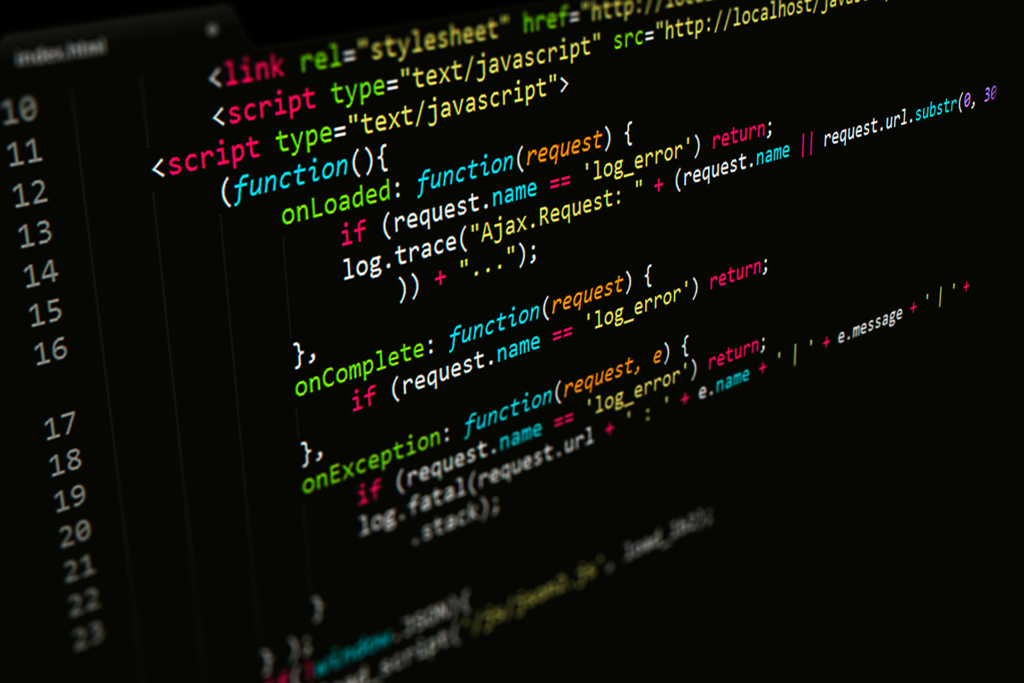Introduction to JavaScript
JavaScript is a high-level, dynamic programming language that was created in the mid-1990s. Initially developed by Netscape with the aim of enhancing web browsers, JavaScript has since evolved into a fundamental component of web development. It is now widely recognized as one of the core technologies of the World Wide Web, alongside HTML and CSS. The language enables interactive features on websites, enhancing user experience by allowing for the modification of content without the need for page reloads.
The inception of JavaScript can be traced back to 1995 when Brendan Eich, a Netscape employee, designed it in just ten days. Originally named Mocha, it was later rebranded as LiveScript before finally being called JavaScript, capitalizing on the popularity of Java at the time. Over the years, JavaScript has undergone significant evolution, adopting new features and improvements that have increased its power and versatility. The language gained traction through the introduction of frameworks such as jQuery, which simplified HTML document traversal and manipulation, as well as other libraries that have expanded its functionalities.
Today, JavaScript serves a dual purpose as both client-side and server-side scripting language. Client-side JavaScript operates within the user’s browser, allowing developers to implement actions that respond to user interactions directly on the webpage. Conversely, server-side JavaScript, facilitated by environments like Node.js, enables server-side programming, allowing developers to run scripts on the server, manage databases, and handle requests. This dual capability has contributed significantly to its widespread adoption and importance in modern web applications.
Core Features of JavaScript

JavaScript is renowned for its diverse set of features that contribute to its status as a versatile programming language. One of the most significant characteristics of JavaScript is dynamic typing. This means that variables do not require an explicit data type upon declaration. Instead, they are capable of holding values of any type, which allows developers to write flexible and less verbose code. For instance, a variable can initially hold a numeric value and later be reassigned to a string without any type error.
Another fundamental feature of JavaScript is its treatment of functions as first-class entities. This enables functions to be stored in variables, passed as arguments, or returned from other functions. This capability elevates the power of functional programming, providing developers with a variety of programming paradigms to leverage. For example, higher-order functions can accept other functions as parameters, resulting in more reusable code segments.
JavaScript also utilizes prototype-based inheritance, a unique feature that allows objects to inherit properties and methods from other objects. Unlike classical inheritance found in other programming languages, this mechanism promotes a more dynamic nature. Developers can create new objects that inherit from existing ones, allowing for code efficiency and modularity. For instance, if a parent object defines some methods, child objects can directly access them, reducing redundancy and fostering better organization.
Furthermore, JavaScript is inherently event-driven. This means that developers can write code that responds to specific actions or events, such as user interactions, HTTP requests, or other occurrences. The event-driven model is vital for creating interactive web applications and enhances user experience by asynchronous processing. As a result, JavaScript remains the backbone of responsive designs in modern web development.
JavaScript Syntax and Data Types
JavaScript is a versatile programming language that is primarily used for web development. Understanding its syntax and data types is crucial for anyone looking to become proficient in coding with JavaScript. At its core, JavaScript syntax is the set of rules that defines a correctly structured JavaScript program. This includes elements such as how variables are declared, how functions are defined, and how control structures are implemented.
Variable declaration is a fundamental aspect of JavaScript. Variables can be declared using three keywords: var, let, and const. The var keyword is function-scoped and was heavily used in earlier versions of JavaScript. The let and const keywords, introduced in ES6, provide block scope, with const being used for variables that should not change. For example:
let x = 5;const pi = 3.14;Operators in JavaScript include arithmetic, relational, and logical operators, which allow for mathematical computations and conditional evaluations. Control structures such as if statements and loops (e.g., for, while) are integral for controlling the flow of a program. An example of an if statement could be:
if (x > 0) { console.log('x is positive');}JavaScript supports several built-in data types, including numbers, strings, booleans, objects, and arrays. The number type can represent both integers and decimals. Strings are sequences of characters, often defined within single or double quotes. For instance:
let name = 'John Doe';let age = 30;Furthermore, objects allow for the creation of more complex data structures, encapsulating key-value pairs.
Overall, mastering JavaScript syntax and data types is vital for effective coding, paving the way for more advanced programming concepts and frameworks.
Working with Functions and Scope
Functions are fundamental building blocks in JavaScript, serving as reusable code entities that execute specific tasks. In JavaScript, functions can be defined in two primary ways: function declarations and function expressions. A function declaration starts with the function keyword followed by the function name, parameters, and a block of code. For instance:
function greet(name) { return "Hello, " + name + "!";}In contrast, function expressions involve assigning a function to a variable. This can be either named or anonymous. Here is an example of a function expression:
const greet = function(name) { return "Hello, " + name + "!";};When invoking functions, developers simply reference the function name followed by parentheses, optionally passing in arguments. Properly understanding the difference between function declarations and expressions is crucial, as the timing of when each is created and executed can impact the scope in which they operate.
Scope determines the accessibility of variables in JavaScript. There are two main types of scope: global and local. Variables defined globally are accessible throughout the program, while local variables, declared within a function, are confined to that specific function. Lexical scope refers to the ability of a function to access variables from its outer scope, which contributes to robust function design.
Additionally, the this keyword can often cause confusion for developers. It refers to the context within which a function is executed. Understanding how this behaves in different contexts—such as method calls or arrow functions—is essential for writing clear and effective JavaScript code.
Finally, closures in JavaScript provide a powerful way to maintain access to a variable’s scope even after the function execution has finished. When a function retains access to its lexical scope, it can lead to significant advantages in code structure and flexibility.
DOM Manipulation with JavaScript
The Document Object Model (DOM) serves as a bridge between the structured content of a web page and the programming capabilities of JavaScript. By leveraging JavaScript, developers can interact with the DOM to dynamically modify the structure, style, and content of a webpage. This capability allows for a more interactive and engaging user experience, as changes can reflect user interactions in real time.
One of the primary methods of DOM manipulation involves selecting elements. JavaScript provides several functions for this purpose, including document.getElementById(), document.querySelector(), and document.getElementsByClassName(). These methods enable developers to target specific HTML elements seamlessly. For instance, using document.querySelector(), one can select the first occurrence of an element that matches a given CSS selector, making it a versatile tool for more complex documents.
Once an element is selected, various modifications can be performed. Properties like innerHTML, style, and className allow developers to change the content, apply styles, or alter classes, respectively. For example, to update a heading’s text, one might use:
document.querySelector('h1').innerHTML = 'New Title';Event listeners play a crucial role in handling user interactions. JavaScript allows the attachment of event listeners to elements, such as click events, form submissions, and keyboard actions, enhancing interactivity. The addEventListener() method enables developers to specify what happens when a user interacts with an element. For example:
button.addEventListener('click', function() { alert('Button was clicked!');});By integrating these techniques, JavaScript not only facilitates the creation of interactive web applications but also greatly improves the overall user experience. The ability to manipulate the DOM dynamically ensures that users can interact with content more effectively, making for a more fluid and responsive web environment.
Asynchronous JavaScript: Callbacks, Promises, and Async/Await
Asynchronous programming in JavaScript plays a critical role in handling tasks that may take an indeterminate amount of time to complete, such as fetching data from a server or reading files. By employing non-blocking code, these asynchronous operations allow the main thread of execution to run smoothly without being stalled by lengthy processes. This is particularly important in maintaining a responsive user interface and enhancing overall application performance.
One fundamental approach to asynchronous programming is the use of callbacks. A callback is a function that is passed as an argument to another function and is executed after the completion of that operation. While callbacks are simple, they can lead to a pattern known as “callback hell,” where nested callbacks make the code hard to read and maintain. To mitigate this issue, JavaScript introduced promises.
Promises represent a value that may be available now, or in the future, or never. They can be in one of three states: pending, resolved, or rejected. By chaining `.then()` and `.catch()` methods, developers can manage asynchronous operations more elegantly than with callbacks. Promises provide a clearer structure for handling errors, improving code readability and maintainability.
The introduction of the async/await syntax further simplifies working with asynchronous code. The `async` keyword is placed before a function declaration, enabling the function to return a promise, while `await` is used to pause the execution of the async function until the promise is resolved. This allows developers to write code that looks synchronous while still handling asynchronous operations effectively. Below is an example of using async/await:
async function fetchData() { try { const response = await fetch('https://api.example.com/data'); const data = await response.json(); console.log(data); } catch (error) { console.error('Error fetching data:', error); }}Understanding asynchronous JavaScript through callbacks, promises, and async/await enhances a developer’s capability to build robust applications that can efficiently handle multiple tasks simultaneously.

JavaScript Frameworks and Libraries
JavaScript frameworks and libraries play a crucial role in modern web development, providing developers with tools that streamline the process of building interactive and dynamic web applications. Among the most popular frameworks are React, Angular, and Vue.js, each offering unique advantages that cater to different project requirements.
React, developed by Facebook, is a library for creating user interfaces. It promotes a component-based architecture, facilitating the creation of reusable UI components. This modular approach not only enhances code maintainability but also speeds up the development process. React’s virtual DOM implementation improves performance by minimizing direct updates to the actual DOM, making it particularly suitable for applications with high user interactivity.
Angular, maintained by Google, is a powerful framework ideal for building large-scale applications. It follows the MVC (Model-View-Controller) architecture, allowing for a structured approach to development. Angular’s robust tooling, including dependency injection and built-in routing, significantly simplifies complex tasks, making it an excellent choice for enterprise-level applications. Furthermore, Angular’s two-way data binding facilitates seamless synchronization between the model and view components, reducing boilerplate code and enhancing development efficiency.
Vue.js stands out due to its progressive nature. It can be adopted incrementally, allowing developers to integrate it into existing projects without full reconfiguration. Vue provides a simple yet powerful API, enabling developers to build interactive interfaces with ease. Its component-based architecture and reactive data binding allow for flexibility similar to that of React while retaining the simplicity favored by smaller projects. Vue.js is noted for its gentle learning curve, which makes it accessible to newcomers in web development.
Choosing the right framework or library depends on the specific needs and scale of the project. By understanding the strengths and features of React, Angular, and Vue.js, developers can make informed decisions that align with their project’s goals and complexities.
Debugging and Best Practices
Debugging JavaScript code effectively is crucial for ensuring that web applications function as intended. One of the most commonly used tools for debugging is the browser developer tools, which are integrated into major browsers like Chrome, Firefox, and Safari. These tools provide a variety of features including the ability to inspect elements, view console messages, monitor network requests, and set breakpoints in your JavaScript code. Utilizing these features allows developers to gain insights into how their code executes in real time, facilitating the identification and resolution of errors.
Another technique that is widely adopted for debugging is console logging. By inserting console.log statements at various points within the code, developers can output variable values, track the flow of execution, and identify where things may be going wrong. This method is particularly useful for understanding complex functions and ensuring that those functions yield expected results. However, it’s important to remember that excessive logging can clutter the console and make it harder to track relevant information, so judicious use is recommended.
To promote good coding habits, following best practices for writing clean and maintainable JavaScript code is essential. This includes using descriptive variable names that enhance readability, keeping functions small and focused on a single task, and utilizing comments to explain complex logic. Additionally, adhering to a consistent coding style not only makes code easier to read but also facilitates collaboration with other developers. Through the implementation of these best practices, developers can produce efficient JavaScript code that is easier to debug, test, and maintain over time.
In conclusion, mastering debugging techniques and adhering to best practices are fundamental to effective JavaScript development. By leveraging tools like browser developer tools and console logging, along with maintaining clean code practices, developers can enhance the quality and maintainability of their JavaScript applications.
Future Trends in JavaScript
As one of the most popular programming languages, JavaScript continues to evolve, adapting to the changing needs of developers and the broader tech industry. One significant trend is the rise of TypeScript, a superset of JavaScript that introduces static typing. This addition enhances code quality and maintainability, addressing many issues developers face with standard JavaScript. TypeScript’s compatibility with existing JavaScript projects makes it an appealing choice for both new and seasoned developers, ensuring its continued growth in the coming years.
Another important aspect of JavaScript’s future is the ongoing development of ECMAScript, the standard that governs JavaScript. Each new version brings innovative features to the language, improving its functionality and performance. The introduction of features like optional chaining, nullish coalescing, and asynchronous iteration reflects the community’s desire for a more robust and efficient coding experience. Keeping an eye on the release schedule for ECMAScript will allow developers to leverage these features as they become available, enhancing their applications.
The influence of JavaScript frameworks is also shaping its future landscape. Frameworks such as React, Angular, and Vue.js have transformed how developers build web applications. These tools streamline the development process and offer extensive ecosystems that continuously evolve. As these frameworks gain new features and capabilities, they will likely serve as stepping stones for JavaScript applications, further embedding JavaScript in modern software development.
Lastly, the increasing importance of web applications cannot be understated. As more services migrate to the cloud and the demand for responsive, performant web applications grows, JavaScript will continue to play a crucial role in front-end and back-end development. Consequently, staying informed about emerging trends and advancements in the JavaScript ecosystem will be essential for developers aiming to remain competitive in a rapidly changing field.


